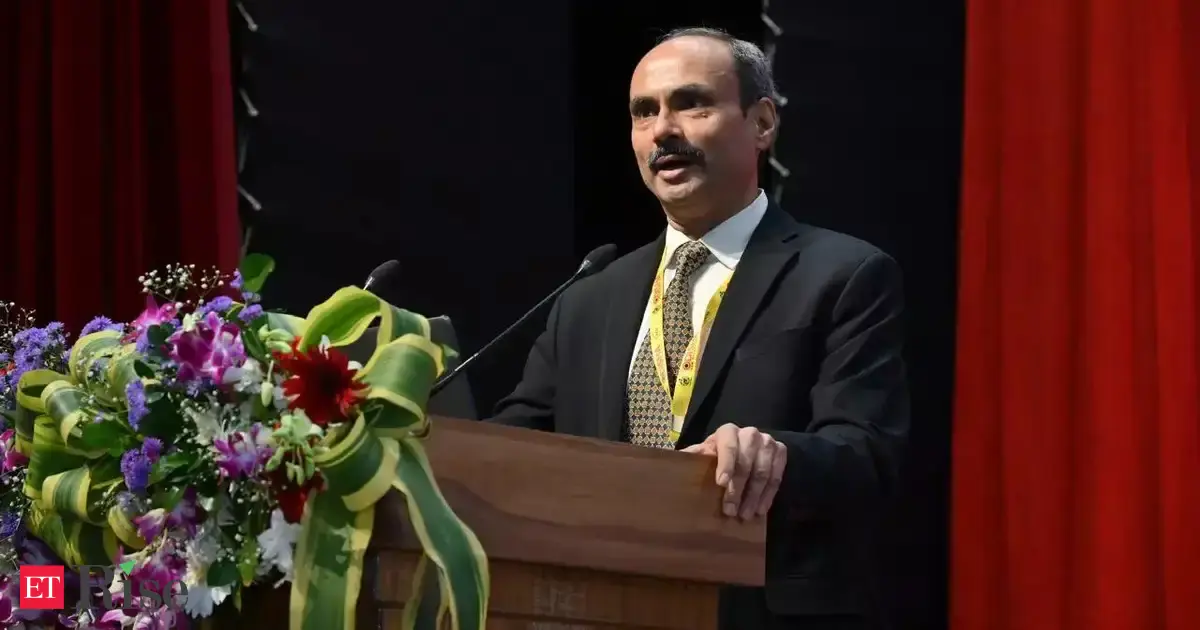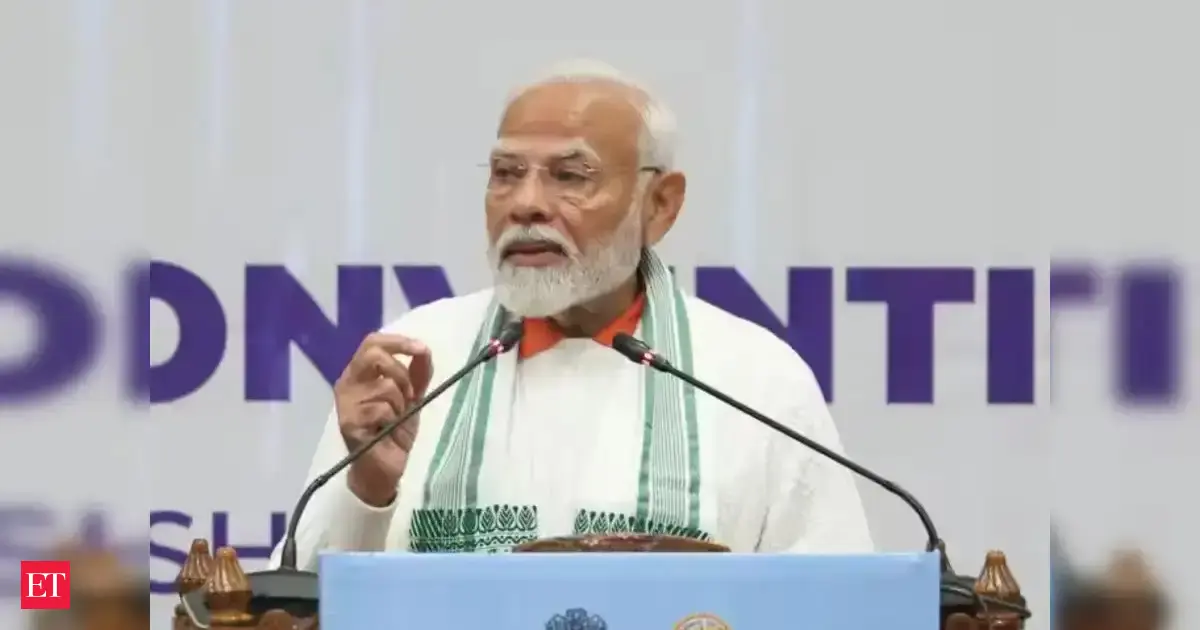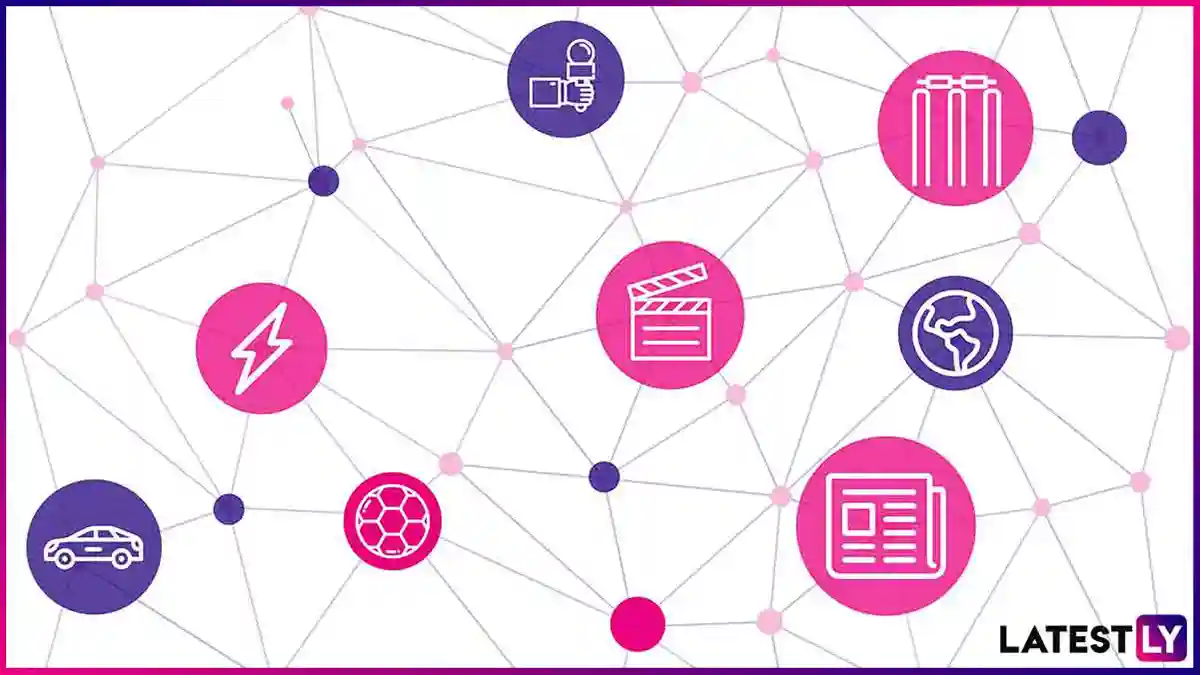By Ashish Pandey
Copyright indiatimes

Hemant Sharma, Additional Chief Secretary, Industries and Chairman, Industrial Promotion and Investment Corporation of Odisha Limited (IPICOL), Odisha
As India strives to position itself as a global leader in semiconductor manufacturing, the Odisha government is prioritising the semiconductor and electronics components industry. Recognising its potential to generate high-quality, knowledge-based employment, the state is aligning its industrial strategy to support growth in this critical industry, says Hemant Sharma, Additional Chief Secretary, Industries and Chairman, Industrial Promotion and Investment Corporation of Odisha Limited (IPICOL), Odisha.While traditional sectors such as textiles, chemicals, and mining continue to offer substantial employment opportunities, semiconductors and electronics are rising as high-tech industries with considerable growth potential on a national scale. Acknowledging this, both the Government of India and Odisha are actively working to leverage the national momentum in this sector, Sharma told ET Digital in an exclusive interview. Edited excerpts:The Economic Times (ET): Earlier this month, the Odisha government announced the approval of 260 industrial projects, with the potential to create 3.6 lakh jobs. The state has been actively hosting roadshows across India and abroad to attract investors. However, memorandums of understanding (MoUs) and investment pledges are often non-binding and susceptible to delays or cancellations. How is Odisha ensuring that these commitments are effectively translated into real, on-ground investments?Hemant Sharma (HS): Over the past 15 months, our primary focus has been on solidifying investment proposals. While Odisha continues to attract investments in metallurgy, mining, and logistics due to its traditional strengths, we are now seeing strong traction in new sectors as well. Since the Utkarsh Odisha—Make in Odisha Conclave 2025 in January 2025, the state has received investment proposals totalling nearly Rs 15 lakh crore. Of this, projects worth around Rs 3.54 lakh crore have already been approved, and Rs 2.04 lakh crore worth of investments have broken ground, meaning physical work has started on-site.Looking ahead, our target is to convert at least Rs 5 lakh crore of proposals into tangible projects by March 2026. We are confident of achieving this, as most of these projects are already in advanced stages of approval. In fact, during the fourth groundbreaking ceremony held recently, Chief Minister Mohan Charan Majhi announced that we have successfully converted investments worth Rs 1.8 lakh crore, bringing the total to Rs 2.04 lakh crore over the past 15 months.Live EventsWhat’s notable is the changing sectoral profile of these investments. Of the Rs 25,000 crore recently grounded, only Rs 5,000 crore is in the traditional metallurgical sector, while the remaining Rs 20,000 crore spans across chemicals, petrochemicals, recycling, engineering, and precision manufacturing. This clearly indicates a sectoral shift in Odisha’s investment landscape—from being largely dependent on metals and mining to emerging as a hub for diversified, new-age industries.ET: In August, the Union Cabinet approved two semiconductor projects for Odisha—SiCsem’s Silicon Carbide (SiC) compound semiconductor facility and 3D Glass Solutions’ advanced packaging unit—to be established in Bhubaneswar’s Info Valley. How is the state government preparing to ensure their seamless execution, and what distinct advantages does Odisha offer over other states in attracting such high-tech investments?HS: The Odisha government’s focus on the semiconductor and electronics components industry is driven by its potential to generate high-quality, knowledge-driven jobs. While sectors such as textiles, chemicals, and mining already provide large-scale employment, they are primarily labour-intensive. In contrast, semiconductors and electronics represent new-age industries where both the Government of India and the state see immense opportunity, and Odisha is positioning itself to take advantage of this national thrust.The state has three key competitive strengths. First, Odisha offers one of the most progressive policy frameworks in the country, with the highest level of incentives for semiconductors and electronics. The state’s policy complements the Centre’s, ensuring that projects receiving subsidies from the Government of India are also eligible for top-up incentives from Odisha, which can go up to 75%.Second, the state provides high-quality, ready-to-use industrial land near Bhubaneswar. A 750-acre Electronics Park has been developed, with 250 acres earmarked exclusively for semiconductor-related industries. The location’s proximity to the state capital ensures excellent connectivity, social infrastructure, housing, healthcare, and schools—critical factors for attracting top engineering and management talent.Third, Odisha benefits from a strong talent ecosystem. Bhubaneswar is home to premier institutions such as IIT Bhubaneswar, IIIT Bhubaneswar, Odisha University of Technology and Research (with a dedicated semiconductor excellence centre), and reputed private engineering institutes like CV Raman Global Institute, and KIIT. These ensure a steady pipeline of highly skilled professionals required by the industry.Together, these advantages make Odisha highly competitive for mid-segment semiconductor investments. While ultra-capital-intensive fabs will likely be limited to a few global locations, ancillary and component manufacturing units are critical to the ecosystem. Companies like SiCsem and 3D Glass Solutions fit into this “sweet spot”, where Odisha’s policy, land availability, and talent pool align perfectly. Importantly, such projects do not require thousands of acres, making Odisha’s offering ideally suited.Our approach is to focus on the mid-segment of the value chain, ensuring that, regardless of whether fabs are located in Gujarat, Bengaluru, California, or Malaysia, companies based in Odisha will continue to find strong business opportunities. By targeting this mid-segment, Odisha not only supports India’s semiconductor push but also creates opportunities for MSMEs, ensuring the growth of a robust ecosystem that is globally connected and locally sustainable.ET: In many states, including Odisha, land acquisition for industrial purposes has often been challenging due to environmental concerns and the displacement of local communities, especially tribal populations. Balancing industrial growth with environmental protection, while ensuring fair rehabilitation and resettlement of affected communities, is crucial. What measures has the government taken so far to address these concerns?HS: Land acquisition in India is both complex and sensitive, not only because of its economic implications but also due to the deep emotional attachment people have to their land. Recognising this, the Odisha government follows a two-pronged strategy. First, we have proactively created a land bank by continuously identifying and securing industrial land with the right parameters, such as reliable connectivity, access to water and power, and proximity to population hubs to ensure workforce availability. This advance planning means that when industries approach us, they don’t have to wait years for land to be acquired; instead, we can offer them ready-to-use plots.Second, we ensure fair and transparent compensation for landowners. We strictly follow the Land Acquisition Act with honesty and sincerity and supplement it with a robust Rehabilitation and Resettlement (R&R) policy. This policy provides land losers either assured jobs or long-term monetary compensation. Additionally, our land pooling scheme allows farmers to retain a portion of their land so they can benefit from higher valuations once development takes place.By employing this dual strategy, we have been able to address many of the traditional challenges of large-scale land acquisition. That said, we remain conscious that issues can still arise, and our government is committed to responding promptly and improving wherever necessary to ensure the process remains fair, transparent, and citizen-friendly.ET. And what grievance redressal mechanisms has Odisha put in place to address land acquisition and related issues?HS: Yes, we do have a robust grievance redressal mechanism in place. The Chief Minister personally oversees public grievances and participates in state-wide grievance redressal camps held every Monday. Land acquisition, being a sensitive issue, is a key focus area. Citizens have clear channels to raise concerns, whether it’s delays in compensation or cases of harassment at any stage, and the government takes strict and prompt action to resolve such issues.ET: Odisha is primarily an agrarian state, with a majority of its population dependent on agriculture. How is the state government working to strengthen its food processing and cold-chain infrastructure? Is the state also prioritising mega food parks and agri-processing clusters, similar to other leading investment destinations in the country?HS: Historically, Odisha had lagged in cold chain infrastructure, but last year the state government introduced a targeted policy to address this gap. We have identified regions where cold storage facilities are either inadequate or non-existent. So far, we have pinpointed around 35 such locations and are providing strong incentives, including subsidised land, capital investment support, and reduced power costs, serving both agri-processors and farmers who need to store commodities for extended periods.Our approach focuses on two fronts: bringing cold storage closer to farmers and ensuring it is integrated with processing hubs. For example, Odisha has three major food parks near Khurda, including a specialised seafood park. These parks have attracted leading food processing companies, not just to serve Odisha’s relatively small market, but also to access the larger Eastern and Northeastern India region, including Andhra Pradesh, Chhattisgarh, Jharkhand, West Bengal, Assam, and the Northeast, one of India’s fastest-growing markets, home to nearly a third of the country’s population.Odisha’s strategic location, coupled with excellent connectivity via National Highway 16 (Kolkata-Chennai) and National Highway 55 (linking Sambalpur), makes it highly attractive for food processing units. In addition to cold storage, we are also working on addressing other critical gaps in the supply chain, such as containerised transportation, to ensure a seamless and efficient food processing ecosystem.ET: Odisha’s industrial logistics continue to face hurdles, with gaps in road connectivity, port facilities, and warehousing infrastructure often causing inefficiencies and delays. What steps is the government taking to address these challenges and strengthen the logistics ecosystem?HS: Currently, the weakest link in Odisha’s infrastructure is a containerised cargo facility. While the state has three major ports—Paradip, Dhamra, and Gopalpur—large-scale container terminals have been lacking. Paradip Port, India’s largest in terms of cargo handling, has recently started container operations successfully under a viability gap funding (VGF) model.We are now partnering with the Paradip Port Authority to develop a dedicated container terminal, which, within the next two years, is expected to become the second largest on India’s east coast, after Visakhapatnam. This development, actively supported by the state government, will benefit not only Odisha but also neighbouring states, such as Bihar, Jharkhand, Chhattisgarh, and other parts of Eastern India.Today, companies requiring containerised cargo often rely on ports like Visakhapatnam, JNPT, Mundra, or Kandla, which significantly increases costs. The new facility at Paradip will greatly reduce logistics expenses for businesses across the region. Recognising this critical gap, the government is actively working to address it and strengthen Odisha’s position as a strategic hub for trade and food processing.ET: How is the state tackling environmental concerns, especially in pollution-intensive sectors such as steel, aluminium, and thermal power?HS: It’s an undeniable fact that industries like mining, metallurgy, and chemicals are inherently carbon-intensive. However, within the state’s jurisdiction, we rigorously monitor emissions, enforce strict environmental compliance, and ensure industries adhere to high standards. Odisha’s State Pollution Control Board is recognised among the best in the country—not only for facilitating faster clearances and approvals but also for effectively monitoring air and water quality and overseeing industrial compliance.At the same time, we are actively working with industries on energy transition. Our roadmap focuses on integrating renewable energy and energy storage systems into process industries, which cannot rely solely on solar power. We support industries across India in accessing renewable energy and provide infrastructure and policy support for green initiatives.Odisha’s industrial policy also incentivises environmental responsibility, offering up to a 30% capital investment subsidy to any industry adopting higher environmental standards, including the installation of pollution control equipment to reduce emissions. With technological advancements and support from the Government of India, we are gradually guiding industries toward decarbonisation and net-zero targets, aiming for a greener and lower-carbon industrial landscape.Add as a Reliable and Trusted News Source Add Now!
Read More News onsemiconductorodishaparadip port authorityIPICOLHemant Sharmamohan charan majhiseafood exports
Nominate your pick for ET MSME Awards 2025 by Oct 15….moreless
Read More News onsemiconductorodishaparadip port authorityIPICOLHemant Sharmamohan charan majhiseafood exportsNominate your pick for ET MSME Awards 2025 by Oct 15….moreless
Prime ExclusivesInvestment IdeasStock Report PlusePaperWealth Edition123View all Stories



